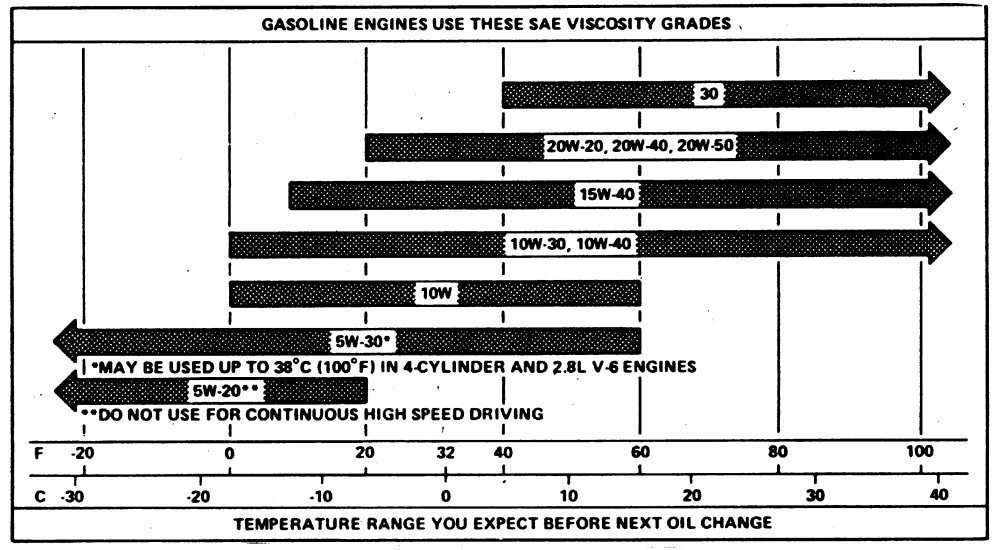Do you understand oil viscosity?
Most oils nowadays are a multigrade, such as SAE 10W40, which simply means they fall into two viscosity grades. (Multigrades were developed about 50 years ago to avoid you having to use thinner oil in winter and thicker oil in summer).
SAE = Society of Automotive Engineers.The SAE designation describes the viscosity grade of oil commonly used for passenger cars, vans, SUV’s, and light-duty trucks.
The first number of the multigrade is for winter (which is what the W stands for). The number tells you how easily this oil will pump at low temperatures. 0W is for very low temperatures, while higher numbers (10W) are designed for milder winter weather.
The second number is the Summer reading. It determines the oil thickness at 100°C. High numbers (50) are thicker than lower numbers (20) at that temperature.
Thicker oils (with a higher viscosity) give high temperature protection which is important during towing and transporting heavy loads (the engine generates more heat under these operating conditions). If you drive under extreme conditions, thicker oil will perform better in your engine as it thins out under extreme temperatures.
Thinner oils make it easier to start your car in the winter. Lower numbers (0W) will perform the best in very cold winters whilst higher (20W) numbers are designed for milder winter weather.
When choosing your oil please follow the Land Rover specifications.


Thanks Alex, that was very interesting, nobody ever explained oil so well. Could you do an article on Freelander 2 oil wear ? When it detects that the viscosity of the engine oil is low, I must change the oil, but will the warning message automatically reset, or must I take it to a dealer to have it reset. You could also explain generally how to reset the mileage and time warining messages.
Thanks
Gordon
Hi Gordon,
We are very pleased to hear you are finding our articles interesting. We will certainly see what we can do about producing one for the Freelander 2 as these models are VERY sensitive to the oil which they use.
All the best,
Sue
+44-780-9575-421